Based on the features mentioned in the previous chapter, Kingdom Animalia is classified as follows.
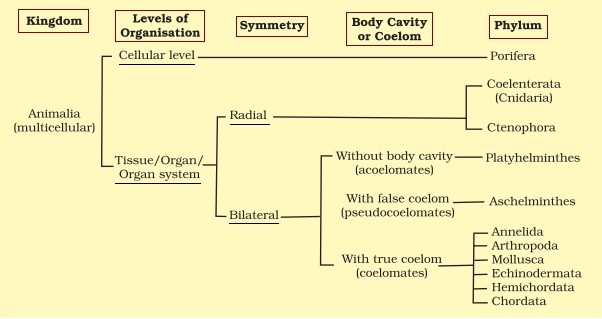
Phylum – PORIFERA
Poriferans are commonly known as sponges.
Habitat: Sponges are mostly marine. Avery few occupy freshwater habitats.
Examples:
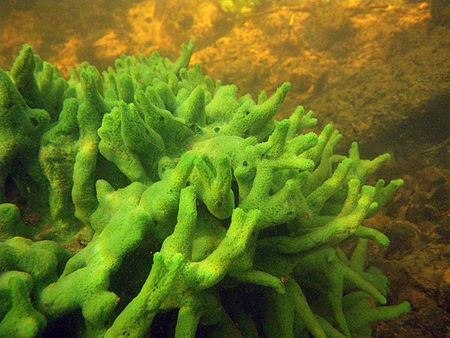
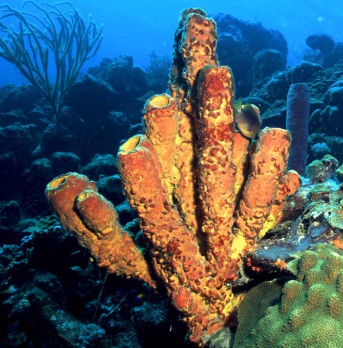
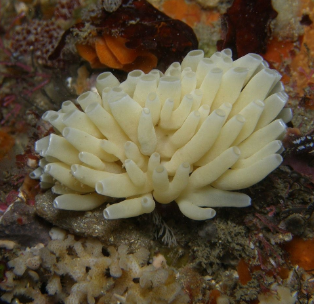
Spongilla Sycon Leucosolenia
Body plan: Sponges are multicellular and have cellular level of organization.
Symmetry: They are either asymmetrical or radially symmetrical.
Germ layer: Sponges are diploblastic. The body wall is composed of an outer layer of epidermal cells and an inner layer of flagellated collar cells called choanocytes.
Body characteristics:
- The body is usually cylindrical, tubular or vase-like.
- Its surface bears minute pores called ostia.
- There is a central cavity called spongocoel with a terminal large opening called osculum.
- The body has an external skeleton made of calcareous or siliceous spicules or spongin fibres.
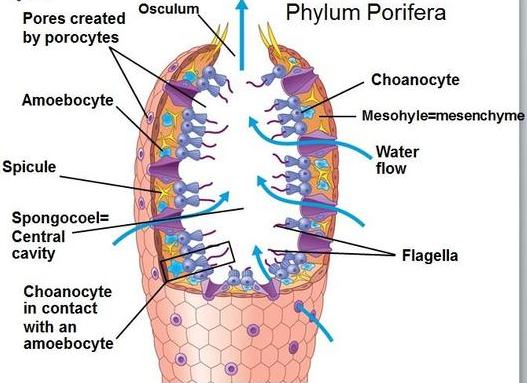
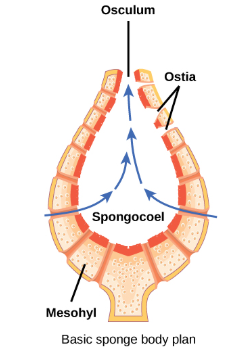
Physiology:
- The sponges have a water transport system or canal system.
- Water carrying food and oxygen enters through the ostia into the central spongocoel.
- The water carrying waste and carbon dioxide moves out through the osculum.
- This pathway helps in respiration, food intake and waste excretion.
- Digestion is intracellular.
Reproduction:
- Sponges are hermaphrodites (sexes are not separate).
- Both male and female sex organs are present in the same organism. Hence eggs and sperms are produced by the same individual.
- Asexual reproduction takes place by fragmentation. Sponges have great powers for regeneration.
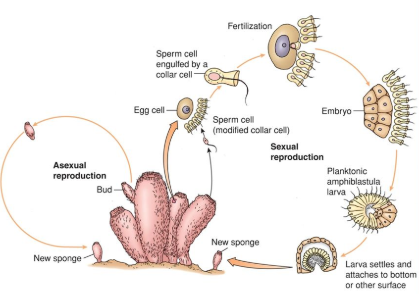
Embryo Development: Fertilization is internal. Development is indirect with a free-swimming ciliated larva called parenchymula or amphiblastula.